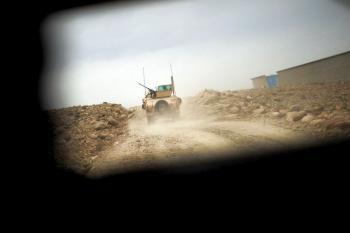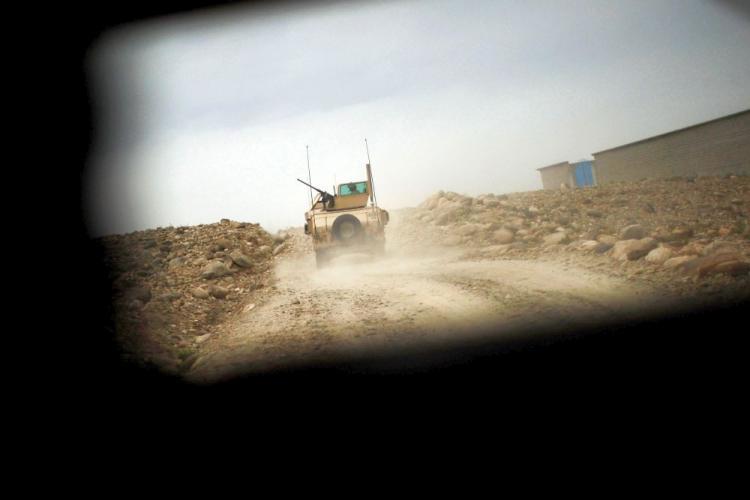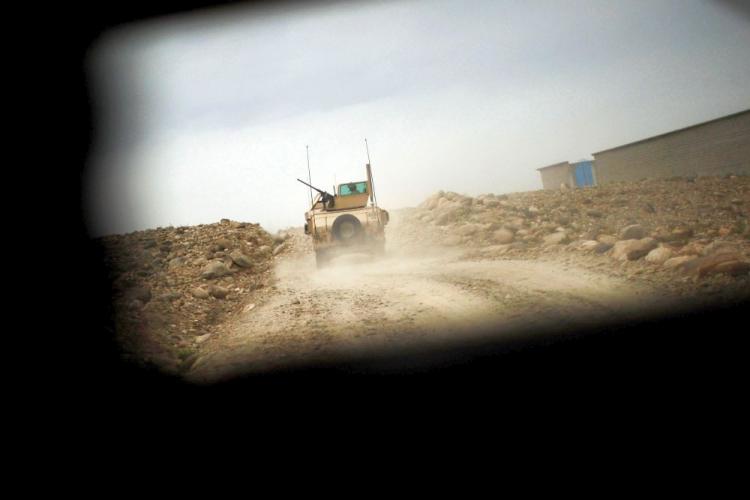Imagine that you are a soldier in Afghanistan. You’re riding in the passenger seat of a U.S. Army-issued Humvee and all of a sudden there is an explosion. Next, you find yourself in an Army medical facility and the doctor stands over you and says your vehicle struck a roadside bomb, but you and your fellow soldier are fine, just a few broken bones here and there.
Before you know it you’re back to work and you feel decent. What you don’t know is that you may have a traumatic brain injury with no physical signs.
Unfortunately, this could be a true story for many soldiers fighting for the United State in Afghanistan. The brain is a very sensitive and unusual organ, and the signs of a traumatic brain injury may not show up immediately. That is why scientists for the U.S. Army Tank Research, Development, and Engineering Center and professor Joy Hirsch of Columbia University are collaborating on a study that measures brain damage in patients with these types of injuries.
“It’s a large problem to the Army and the soldiers,” said by Thomas Meitzler, a scientist with the U.S. Army center during a Pentagon Channel podcast interview on Feb. 3.
Specifically, the study is designed to determine the areas of the brain that are more prone to damage. Scientists determine this by measuring how the brain is engaged while performing certain functions under an MRI (Magnetic Resonance Imaging).
The MRI can capture high definition images of the brain and the scientists can see which areas of the brain are working while being subjected to certain tasks. Some of the tasks patients are subjected to under the MRI include cognitive, language, and memory tasks as well as problem solving and emotional control tests.
This is a particular problem for soldiers who are exposed to bomb blasts, who could have symptoms of injury without obvious physical evidence. A soldier may return to duty without being properly diagnosed or treated. With further research in the area and continued learning on how the brain works, proper treatments can be given and advanced.
Vehicle engineers in the field also want to create safer tanks and vehicles with sensors that measure a bomb’s magnitude. This could give engineers data they need to create even safer vehicles so that soldiers face less risk.
Another field improvement in the works includes soldiers being MRI scanned before they are deployed. The information would be stored on digital dog tags and if the soldier has an injury a proper comparison can be made. This could jump-start treatment and curb damage before behavioral signs of a trauma show.
Before you know it you’re back to work and you feel decent. What you don’t know is that you may have a traumatic brain injury with no physical signs.
Unfortunately, this could be a true story for many soldiers fighting for the United State in Afghanistan. The brain is a very sensitive and unusual organ, and the signs of a traumatic brain injury may not show up immediately. That is why scientists for the U.S. Army Tank Research, Development, and Engineering Center and professor Joy Hirsch of Columbia University are collaborating on a study that measures brain damage in patients with these types of injuries.
“It’s a large problem to the Army and the soldiers,” said by Thomas Meitzler, a scientist with the U.S. Army center during a Pentagon Channel podcast interview on Feb. 3.
Specifically, the study is designed to determine the areas of the brain that are more prone to damage. Scientists determine this by measuring how the brain is engaged while performing certain functions under an MRI (Magnetic Resonance Imaging).
The MRI can capture high definition images of the brain and the scientists can see which areas of the brain are working while being subjected to certain tasks. Some of the tasks patients are subjected to under the MRI include cognitive, language, and memory tasks as well as problem solving and emotional control tests.
This is a particular problem for soldiers who are exposed to bomb blasts, who could have symptoms of injury without obvious physical evidence. A soldier may return to duty without being properly diagnosed or treated. With further research in the area and continued learning on how the brain works, proper treatments can be given and advanced.
Vehicle engineers in the field also want to create safer tanks and vehicles with sensors that measure a bomb’s magnitude. This could give engineers data they need to create even safer vehicles so that soldiers face less risk.
Another field improvement in the works includes soldiers being MRI scanned before they are deployed. The information would be stored on digital dog tags and if the soldier has an injury a proper comparison can be made. This could jump-start treatment and curb damage before behavioral signs of a trauma show.






